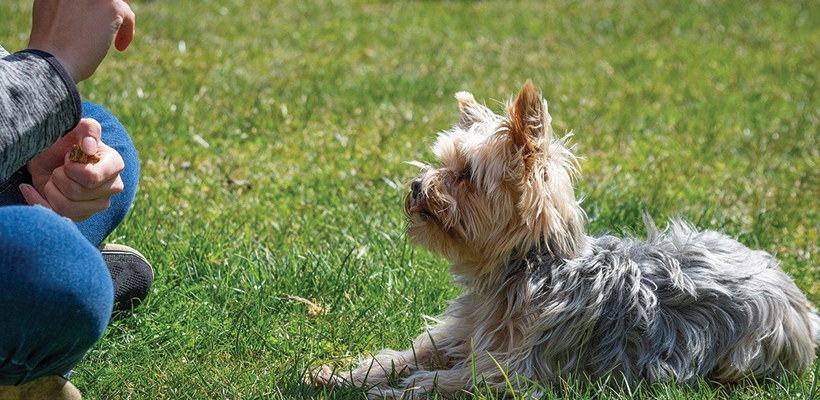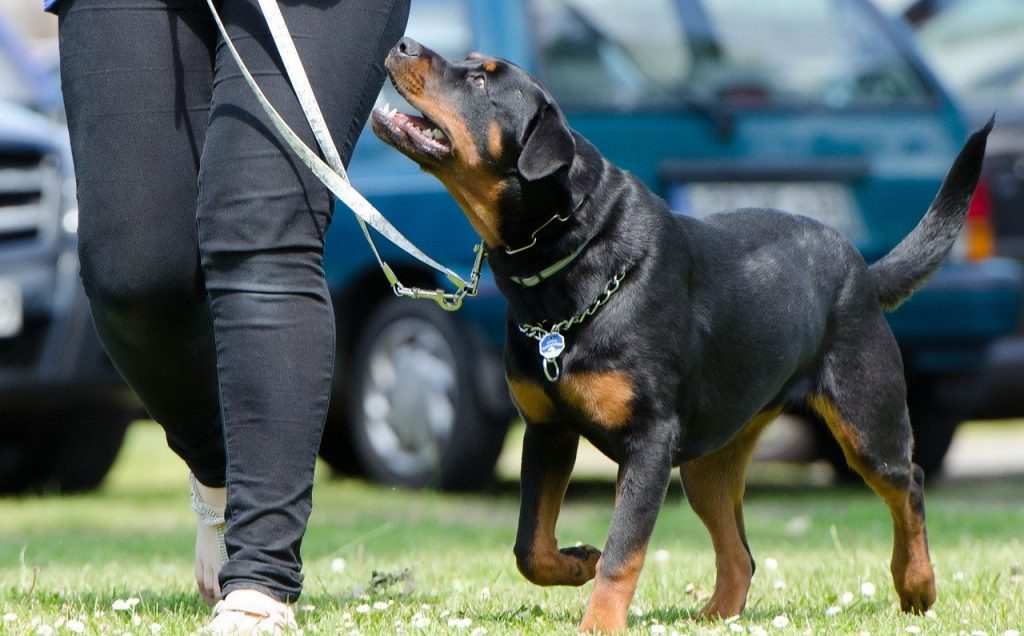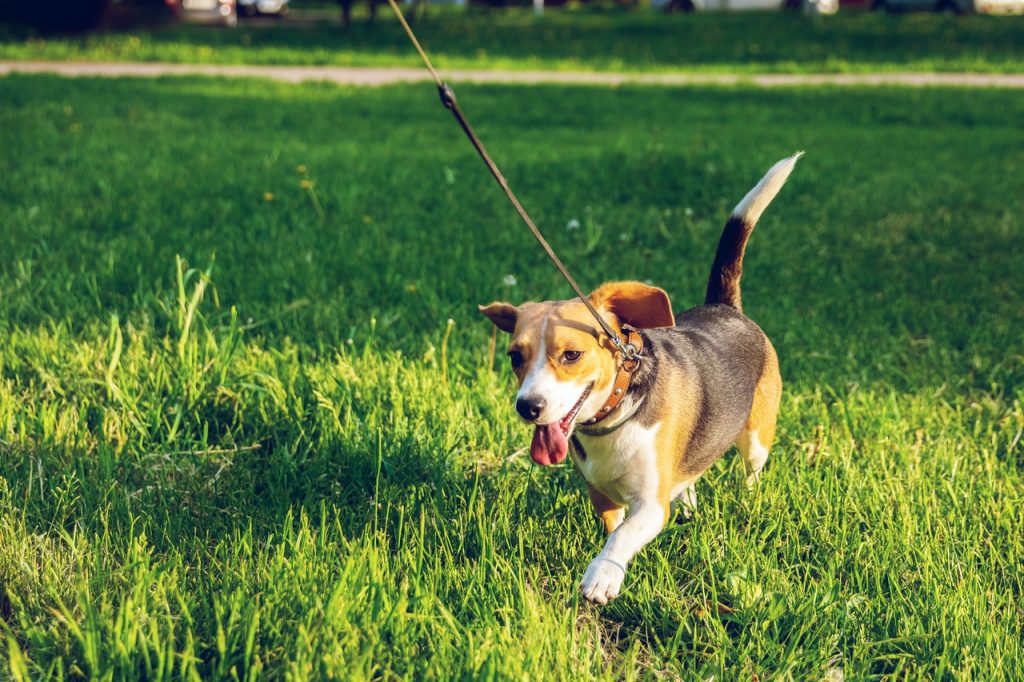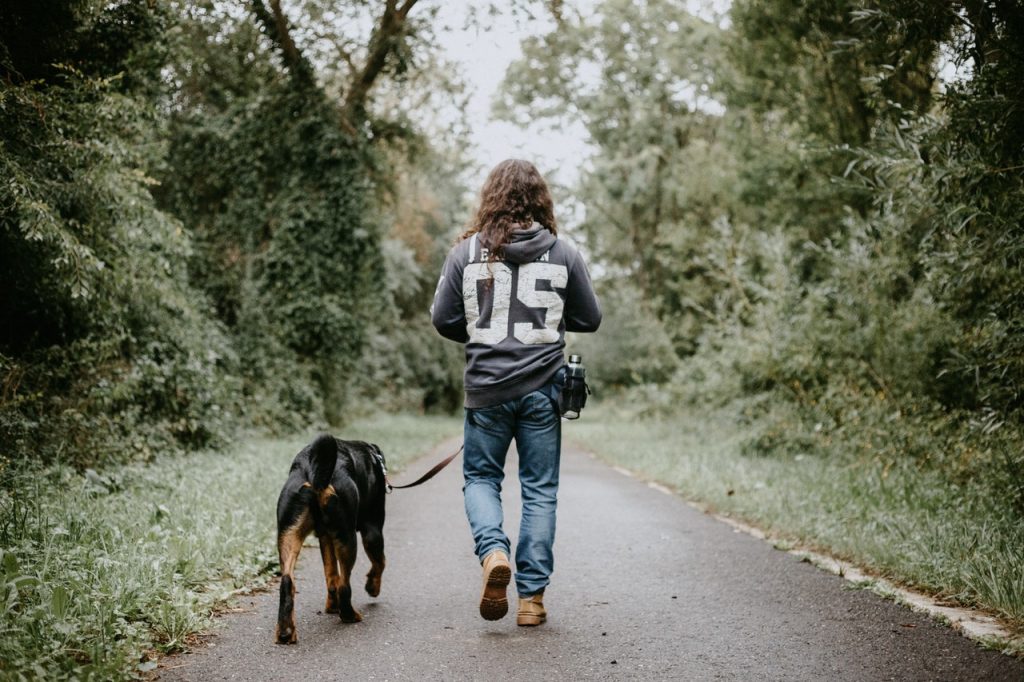
This article is contributed by guest writer, Amy Davis (Creator of Ultimate Pet Hub).
Important Commands & Lessons Every Dog Must Know
As mentioned in UltimatePetHub, each dog owner has a different vision of how their dog will be trained. Some dog owners anticipate competing with their dog in obedience or agility classes.
Other people are simply looking for a companion to relax around the home together or embark on runs, hikes, and walks. Yet other people are interested in a family dog that can be trusted with the children of the home.
Regardless of what a person is looking for in their dog, they should engage in training when they first welcome their dog into their home. A few commands will set the stage for a positive relationship with their dog and will help their dog grow into a well-behaved member of the family.

Photo Credit: Helena Lopes via Pexels
Training your dog
1. Command to sit
One of the most important commands is to sit. Teaching your dog this command sets the tone for all other training endeavors to follow.
Your dog should be told to sit when you are preparing his food, welcoming guests or attaching or detaching the leash. Using an escape proof dog harness usually works very well here.
- Hold a treat near your dog’s nose while they stand up.
- Move your hand over your dog’s head and as the dog raises his head to watch the treat, his bottom will usually go on the floor. Once they sit down praise him and give him the treat.
- Practice steps 1 & 2 multiple times in brief but frequent sessions.
- As the dog takes a treat for sitting, you’ll soon find they will sit for longer. Now add in the word “sit.”
- Only say the word “sit” when the dog has sat down, so they don’t associate the word with anything else.

Photo Credit: Pezibear via Pixabay
2. Command to stay
Your dog should also learn the command to stay. Once he knows how to sit, stay is the next step. By telling him to stay you can keep him safe and secure.
Conversely, you should get your dog familiar with the command to “come” too. He will need to know when to end his “staying” and also how to recognize your direct requests to come back to you when he is off of the leash or somewhere in the house.
- Start with your dog laying down and ask them to stay down.
- Say “stay” in a calm tone of voice and set your hand out in front of you and ensure your palms are facing forward.
- Wait a few seconds, then press a clicker and reward your dog for staying.
- Practice steps 1-3 many times. If you decide to use only verbal commands, say “yes” or “great” to let your dog know that you are satisfied.
- Gradually extend the length and the range of the command “stay.” But remember that you will need constant practice before you go too far.

Photo Credit: 825545 / 455 via Pixabay
3. Leash command
Next, comes the leash command. Teach your dog to walk nicely when on the leash. Some people say “walk nice,” while others might say “easy,” or “slow.” Find out what works for you and your dog, and then remain consistent.
Many people also like to teach their dog a command to take care of their business. You might literally say, “do your business,” or perhaps “go to the bathroom.” Again, find out what works for you and your dog, and be consistent.
Remember to remain patient, and focus on positive reinforcement when working with your dog. Over time, he will learn his commands and you will have a well-behaved dog.
- Use some treats to entice your dog near your right hand that has a treat in it. Your left hand should have the lead in it.
- Call them to receive a treat and make sure they are facing the same direction as you.
- Feed them a treat. Wait for them to move away and then tempt them back to your side again.
- Feed them again for staying in the correct place.
- Now, with your dog by your side, let them smell the treat, but don’t give it to them. Instead, raise your hand and give the instruction, “with me” or “heel.”
- Now once your dog has come to your side then feed them the treat.
- Once you’ve practiced these steps repeatedly your dog will quickly form the association of walking correctly by your side.

Photo Credit: Artem Beliaikin via Pexels
Do not let your dog walk you
Every new dog owner wants to take their dog for a walk around the block or even a hike through the mountains; however, not every dog owner knows how to teach their dog to walk with them properly and they are faced with their dogs taking them for a walk instead. Here are a few tips to change that behavior.
1. Be unpredictable
Making quick and abrupt turns in the opposite direction anytime your dog starts to get ahead of you will teach him to pay attention to where you’re going. Praise him lavishly when he returns to your side and even reward with a small treat if your dog is food motivated.
The idea is to stop the pulling before it even starts by catching him off guard. Be calm, no need to scold him, he’ll figure it out.
Remember, you may have to turn around forty times in the first session and barely make it halfway down the driveway, but don’t worry, it will get better the more you practice.
Many dogs catch on quickly to this game and start to watch their owner closely to see what they’ll do next. A dog that’s paying attention to you isn’t pulling on the leash.

Photo Credit: Tom Verdoot via Pexels
2. Set the rules and stick to them!
Decide once and for all that you will not allow him to pull and then react anytime he tries to move ahead of you. This means you’ll have to be watching him closely during the first couple of sessions.
Allowing him to pull sometimes but not all the time will only confuse your dog. Look at your next couple walks as training experiences, not exercise. Once your dog gets the hang of it then you can start to plan on moving past the driveway.
3. Practice, distract and practice some more
Teaching good leash walking skills is an ongoing process. You may need to ‘be unpredictable’ every once in a while even after your dog understands what you expect.
Keep him on his toes and keep practicing. Don’t be stingy with the praise, let him know when he’s doing the right thing and you’ll start to see more of that behavior.

Lee
July 23, 2020 at 11:20 AMThank you it was very helpful even with my seven-year-old it’s still I mean he’s good but he needs polishing but I have a Chihuahua then I’m gonna let her read these things and then I’m going to try to talk to her about it but he’s got way too much chupacabra in her but thank you
Roger Brady
August 1, 2020 at 6:15 AMThe two most important commands…NO and COME, Come every time, not just when they want to. Sit, stay, lay down, roll over, balancing
a milk bone on their nose, etc. comes later.
My Motto.
“What you permit, you promote”…………….